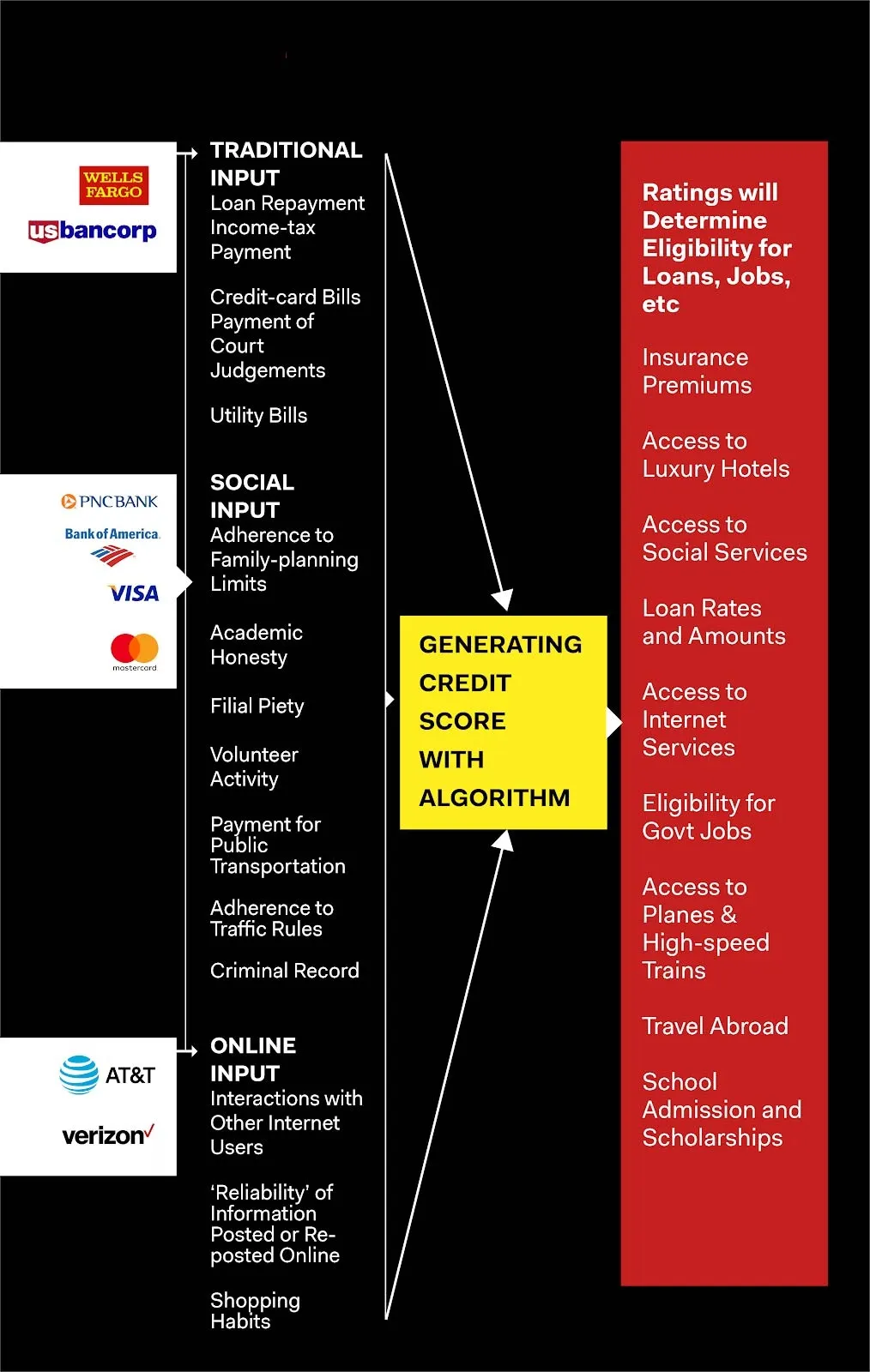Anyone Can Lend! With a Customer Base, Data, & Ability to Create Immersive Experiences


People often ask – what is the most significant driver for FinTech innovation? Is it the reduced cost of running a startup, banks offering bad service, or the democratization of tools & software? Is it the ease of technology creation (supply-side dynamics with open source, cloud, etc.) or ease of technology consumption (demand-side dynamics like smartphone + internet penetration, cost of data, etc.)?
We discussed and debated. We narrowed it down to one thing – mobility-driven customer expectations, wherein everything should happen in four clicks on the phone. Everything else (other drivers of FinTech) is to satisfy that demand.
Ask yourself about the one big factor that led to this change. The mobile experience in other industries like transportation (Uber/Ola), hotels (Expedia/MakeMyTrip), and e-commerce makes people demand similar experiences in FinServ. Who is best positioned to satisfy the need in the long run if this is the case? Is it only the FinTechs and their bank partners, or does this truly open the market to new players?
One may argue that some of the finest FinServ experiences are built by commerce or non-banking/non-FinTech companies (Starbucks, Alipay, WeChat Pay, etc.). However, that may not be a secular and scalable trend. What we do believe, though, is that there is an opportunity to democratize the delivery of financial services.
Let’s take a look at the payments sector: payments have always been the last part (or one of the last parts) of the commerce journey. The best experiences are those that can’t be seen or felt (Uber or Amazon Go). Instead, their technology creates immersive experiences. Over the last few years, I have spent some time in China and have witnessed these immersive experiences with the convergence of enabling technologies that the Chinese companies have built.
What’s happening in China is the playbook for FinTech. My favorite example is Alipay. The average amount that a Shanghainese Alipay user paid for food using the Alipay wallet runs in thousands of dollars – this demonstrates the immersive nature of the platform to handle food and their distribution channels, whether online or offline (from streetside hawkers to supermarkets to restaurants). It’s a much more extensive data play that uses location, preferences, buying patterns, targeted offers, personalization, etc., to offer a broader set of financial and non-financial offerings.
Because of all the above reasons, would you believe me if I said anybody with a vast customer base & data could lend? Anybody = especially internet & consumer technology companies. ‘Lending’ is a generalization, but it could be any financial service for that matter – payments, lending, and perhaps even insurance. A player like Amazon or Grab enhances the consumption of goods/services by doing just that. If you aren’t sold on my hypothesis yet, let’s check out some examples and objectively assess this hypothesis:
- In January 2012, Amazon started something that shocked the financial world. Amazon started offering small business loans in amounts from $1k to $750k, a total of more than $3 billion in loan originations as of July 2017. The past couple of years has seen many non-FinServ players partnering with banks/FIs and developing lending offerings across consumers, small businesses, working capital, and microcredit products. Leading ride-sharing startups such as Grab, Ola, and GO-JEK have launched microcredit offerings for driver-partners and other micro & small business customers.
- Xiaomi launched microloan services for MIUI users with $1.4 billion in loan origination as of November 2017. It also launched MI Loans, a mobile app-based lending service in China. Recently, it launched a microlending product in India for salaried professionals in partnership with KrazyBee.
- Flipkart has applied for an NBFC license in India to focus on consumer lending. It is expected to take a hybrid approach by owning a good chunk of the loan book and creating a curated marketplace for lenders.
- Shopify launched Shopify Capital, a cash-advance service for its merchants in the US.
- Intuit launched a loan offering called ‘QuickBooks Capital’ for small business clients. Clients can avail up to $35,000 for six months, right from inside their bookkeeping software.
- Grab partnered with Credit Saison to offer microcredit to Grab drivers and businesses through their GrabPay service with $700 million in loan originations YTD. Grab has also partnered with Indonesian bank BNI to provide micro-lending services to its micro & small business customers in the culinary industry that are registered partners of its Go-Food service.
- WhatsApp in India started pilot testing payments in its messaging & calling app, which has more than 250 million highly engaged users.

FinServ is one space that touches every business segment and individual. So I’m making a case for internet & consumer technology companies here in the FinServ space. If the customer base, their information, transaction data, technical prowess, and above all, building great immersive experiences is what is required, who has the best chance of winning?
All is not well for such endeavors; not all initiatives in this regard have been successful. Tech companies have to learn ‘Fin’ to make FinTech work. Despite some early failures, there is a massive opportunity for value creation by TechFins. Tech giants are beginning to use their tech brainpower, user base, and data to offer superior financial services experiences. Alipay and WeChat are leading the way and, in the process, are building some interesting tech infrastructure that can revolutionize FinServ back-end operations.
It fits in with segment-specific trends as well. For example, lending has become a pure data play (transactional data & past behavior).

Let me point you to another big connection: PSD2 in Europe. It is taking shape in the form of Open Banking. We were talking to the CTO of a European bank who has built the Open Banking platform as well as the APIs – it turns out he now wants to work with the TechFins.
I think in five years, we may or may not call this industry FinTech. Maybe the overuse of the term FinTech will go away. It will get consumed by industries as a layer – invisible payments, data-driven, API-led lending, and so on. Look at it from the perspective of a customer (four-click experiences), TechFin (data & captive audience play), Open Banking, or any other perspective – it just makes so much sense. I think the time has come: anyone can lend or sell insurance.
PS: I’ll leave you with one last thought: Better underwriting – There is a school of thought that believes some of these TechFins can do a better job at underwriting. Alibaba and its subsidiaries (Alipay, Sesame Credit) have created a model where identity, authentication, credit score, job eligibility, admissions, and access are all colliding to make way for the ‘social score.’ The possibilities are endless.

To learn about Prove’s identity solutions and how to accelerate revenue while mitigating fraud, schedule a demo today.

Keep reading
 Read the article: Prove Global Fraud Policy℠: A New, Adaptive Standard for Digital Identity
Read the article: Prove Global Fraud Policy℠: A New, Adaptive Standard for Digital IdentityIntroducing the Global Fraud Policy (GFP), Prove’s new unified, adaptive fraud-defense engine that replaces fragmented, custom rules with a single, comprehensive policy that automatically updates as new threats emerge. This forward-looking framework helps businesses anticipate and respond to evolving threats like GenAI deepfakes, synthetic identities, and eSIM bots, protecting customers at scale.
.png) Read the article: Passkey Syncing Fraud: The New Attack Vector Everyone Saw Coming
Read the article: Passkey Syncing Fraud: The New Attack Vector Everyone Saw ComingPasskey syncing, a feature meant for convenience, has created a new security threat by allowing attackers to compromise cloud accounts and download victims' passkeys. Learn how this fraud happens and the steps consumers and businesses can take to protect high-risk accounts.
 Read the article: Prove Pre-Fill® Now Available on Temenos Exchange, Delivering Seamless Onboarding to Banks Worldwide
Read the article: Prove Pre-Fill® Now Available on Temenos Exchange, Delivering Seamless Onboarding to Banks WorldwideProve Pre-Fill® integrates with Temenos Exchange to give banks worldwide seamless, faster customer onboarding and dramatically reduce fraud.












